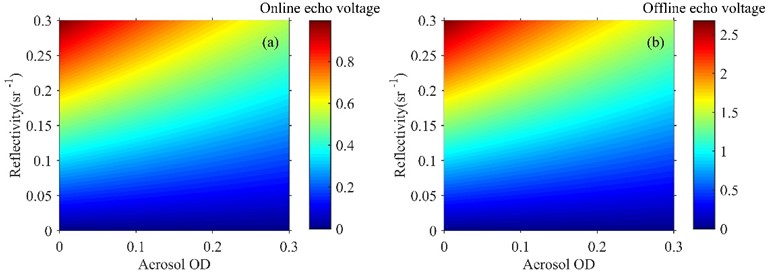The global GHGs (carbon dioxide and methane) levels are critical for studying the global carbon cycle. Space-borne integrated-path differential absorption (IPDA) LIDAR systems can measure carbon dioxide column concentration globally with 1 ppm accuracy on daytime and nighttime.
In a recent study, the research group from Shanghai Institute of Optics and Fine Mechanics (SIOM) of Chinese Academy of Sciences (CAS) presented the 1.57-μm airborne double-pulse integrated-path differential absorption (IPDA). The study analyzed the random errors and system errors based on the actual flight system parameters of the airborne IPDA LIDAR system, and new airborne correction algorithms were presented. The results were published on Optics Express.
In the simulation, to analyze the relative random error (RRE), the study assumed that the detector noise, background noise, and signal noise obey the Gaussian distribution and that the quantization noise exhibits a uniform distribution. Moreover, the systematic errors caused by the laser pulse energy, linewidth, spectral purity, and frequency drift, as well as the atmospheric parameters related to the flight experiments were also investigated.
The system parameters were verified to meet the requirement of 1 ppm XCO2 measurement bias. Using actual aircraft attitude and position data from flight experiments, the relative errors (REs) in the IWF caused by the uncorrected integral path and Doppler shift were determined to be 0.273% and 0.479%, respectively. However, the proposed correction algorithms for the integral path and Doppler shift could eliminate REs by accurate calculation of IWF.
This new airborne IPDA LIDAR systems provide a means of verifying the performance of space-borne LIDAR systems as well as data inversion methods used by them.
This work was funded by the ACDL LIDAR project.

Fig. 1 Variations in absolute values (V) of (a) online and (b) offline echo voltages.
Article website:
https://www.osapublishing.org/oe/abstract.cfm?uri=oe-27-22-32679
Contact:
Mr. Cao Yong
General Administrative Office
Shanghai Institute of Optics and Fine Mechanics, CAS
Email: caoyong@siom.ac.cn